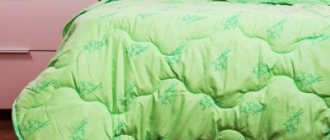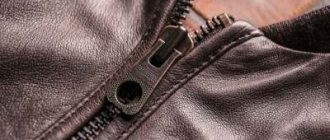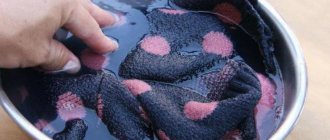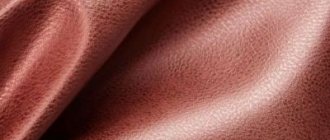Most people have favorite knitted items. They are warm and reliable. You can wear them on a trip, to work... Moreover, we are not necessarily talking about the usual knitted sweater or jumper. This could be a knitted cardigan, a wool scarf, warm mittens, a cashmere sweater or an elegant coat. But in order to preserve the properties of such clothing, it must be properly taken care of. Let's find out how to wash knitted items, dry them and store them.
Is it possible?
You can wash knitted items either in a machine or by hand. However, there are a few points you need to pay attention to before you begin the procedure:
Determine the type of yarn. For natural wool, liquid detergents are used. They are washed using a special program. Synthetic knits can be processed as usual using powder.- Before you start washing, you need to read the information on the product label.
- Dosage the detergent according to the instructions, since a lot of foam is formed when washing knitted items.
- Wash items only when necessary. The less often knitted items come into contact with water, the better.
If you just need to refresh the fabric, resort to dry cleaning. The product is placed in a plastic bag, covered with soda and shaken thoroughly. After 15 minutes, all that remains is to shake and ventilate the item.
Detergents for knitted items
Regular laundry detergents can damage knitted items. The fur of animals (sheep, camels, goats...) from which wool is made is similar to human hair. It is wrapped in a thin outer layer which defines the appearance of the fibre/wool. When washed with conventional means, this layer may be destroyed. This can make the yarn dry and dull. It may also lose its original color. Washing powders containing enzymatic ingredients are completely unsuitable for washing knitted items.
Recommended detergents:
- "Perwool." The best choice is Perwoll Care Balm in liquid form.
- Shampoo. Try washing the knit with daily shampoo. Constantly use only shampoos for normal hair (not for oily or damaged hair). A good option is baby shampoos.
Additional tools:
- Hair conditioner. If you want to increase the softness of the knit, especially with coarse wool, add a little hair conditioner when rinsing. The yarn will become soft, its shine will increase, and the product will acquire a pleasant smell.
- Fabric softener. It can be used, but only for some types of yarn.
Important! Products made from sheep's wool can be washed in lanolin washing powder. Natural wool contains lanolin. This is a substance that protects sheep from getting their wool wet. Thanks to it, sweaters will retain their excellent properties for a long time.
Expert opinion
Evgenia Taran
The key to washing success is moderation. To achieve the desired result, a small amount of detergent and conditioner is enough. Excessive amounts of them will do more harm than good.
Selecting a detergent
Knitted items should be washed in liquid detergent. Such compositions effectively remove contaminants even in cold water.
Unlike powder, they quickly dissolve and are easy to rinse, do not linger in the fibers of the fabric and do not damage the product.
There are many specialized products that are designed to care exclusively for knitted items. These include:
Gel Laska wool and silk . The price is about 400 rubles for 3 liters. The product works at a temperature of 30-40 degrees.- Balm Nordland for wool and silk . Its cost is 340 rubles per 0.75 liter. The product is suitable for both hand and machine wash.
- Help washing liquid . The cost of 1 liter is 120 rubles.
If powder is used, then preference should be given to such compositions as:
- Villi (60 rubles),
- Cashmere (90 rubles),
- Luxus Professional (400 rubles).
You can purchase any detergent in a retail store, in the household chemicals department, or order it online.
At what temperature should I wash?
Before washing a knitted item, you need to decide on the temperature regime. It will depend on the structure and composition of the threads from which the product is made. Yarn is traditionally divided into:
- natural (silk, wool, cotton);
- artificial (viscose, acrylic);
- mixed (often a combination of natural wool thread and artificial thread).
Woolen items are washed at a temperature not exceeding 300C. Dirt rarely penetrates natural fibers, but only sticks to them. If you need to reduce the size of the product, you can wash it in hot water and rinse in cool water. The temperature difference will give the desired shrinkage.
For cotton and silk, water up to 400C is suitable. These materials are as capricious as wool. For them, use the delicate wash cycle.
Mixed and synthetic fibers can be washed at temperatures of 40–450C and on more intensive modes (for example, “synthetics”).
Washing instructions
Knitted items need to be washed taking into account a number of factors. It is necessary to properly prepare them for the upcoming procedure, carefully squeeze the fabric from the water. Both hand and machine washing have their own nuances.
In the typewriter
A serious problem that all owners of knitted items face is pilling.
To prevent their formation, items should only be washed inside out. You can protect them from excess friction using a special washing mesh.
Procedure for machine washing knitted items:
Clean the product from dust and other debris that may get caught in the hinges.- Fasten buttons and zippers, check pockets.
- Turn the item inside out and place it in a laundry bag.
- Set the machine to “Wool” or “Delicate Wash” mode. If there is no such program, then the setting is carried out manually: water temperature - 30 degrees, spin speed no higher than 600 rpm. It is recommended to turn on the “extra rinse” function.
- Pour or pour the selected detergent into the washing machine compartment.
- Wait for the cycle to complete, take out the item, turn it right side out and leave to dry.
If synthetic fibers predominate in the fabric, then the water temperature can be increased to 40 degrees. To prevent the long neckline, cuffs or other delicate parts from stretching during the washing process, they are secured with thick thread. Remove it after the product has dried slightly.
How to do it manually?
Hand washing is considered a more gentle way to care for knitted items. A person has the opportunity to minimize the time they spend in water, as well as control the friction force at each stage.
Procedure:
- Fill the basin with water. Its temperature should not be higher than 30-40 degrees.
- Dissolve the detergent until a rich foam forms. For items made from natural wool, you can use hair shampoo.
- Turn the item inside out.
- Immerse the product in water. Soaking is necessary when there are difficult stains on the fabric.
- After half an hour, gently rub the item with your hands. Effort should be minimal. Only stains are treated in this way.
- Rinse the item thoroughly, changing the water several times.
- For the final rinse, you can add a little hair conditioner to the bowl.
After washing, the product is not wrung out or twisted. It is simply left in the bathroom until most of the water has drained. You can wrap it in a dry towel, it will absorb excess moisture.
When putting a knitted product away for storage after washing, it is not wrapped in plastic. Wool must breathe. She will lock herself in the bag and fall off.
Preparing for washing
Knitted clothes, regardless of whether they are made by hand or purchased in a store, require careful handling. Such things do not like frequent washing; it is advisable to wash them no more than once every two months (or less often). Knitted wardrobe items lose their luster when exposed to water. An alternative for such clothing is long-term ventilation.
In order for a thing to serve for years and please the owner with its appearance, you need to follow certain rules. Before washing knitted clothes you must:
- Study the label and tags on the product carefully. They will inform the owner about the conditions for caring for a specific item of clothing, for example, about the temperature regime, the possibility of automatic spinning.
- Prepare water at a temperature of 30–350C. Hot water damages the structure of products, leading to stretching or shrinkage, depending on the type of thread.
- Choose a detergent. It is better if it is liquid or marked “for delicate washing”. Such mixtures cope more easily with contamination at low temperatures, are better rinsed, and do less harm to the color of the threads. The powder should be dissolved in water before use.
- Correctly calculate the amount of detergent. In this case, you should take into account the volume of clothing, contamination, and water hardness.
- Sew the collar and cuffs of the product with thick thread to prevent stretching and deformation.
- Comb or put in the freezer for several hours sweaters made from fluffy threads. This will prevent the pile from falling on the surface.
- Turn the product inside out.
- Determine the presence of stains or heavily soiled areas. Such areas are pre-treated with a stain remover or a double dose of detergent. It is not advisable to rub them; it can be treated with a natural bristle brush.
- Do not soak the item for a long time to avoid color fading; 5–7 minutes is enough to “open” the fibers and soften the stains.
- Wrap wooden buttons in cling film or foil.
It is better to hand wash a knitted item of clothing made from fine quality yarn. This will allow you to preserve your expensive item and save money on dry cleaning. There are certain tricks that housewives use when cleaning knitted clothes from dirt:
- Cotton and linen can be washed together, just like silk and wool.
- To wash wool, you can use shampoo for long-haired cats. Such products are designed taking into account the risk of tangles.
- Wool products love an acidic environment; it is not advisable to use alkaline laundry soap to wash them.
- If your clothes have inserts made of leather, suede, or fur, it is better to dry clean such items of clothing.
- When preparing water for washing items that fade, you should add a tablespoon of vinegar or lemon juice to fix the color.
How to wash a handmade product?
Hand knitted items must be handled with care as they are particularly susceptible to pilling . To prevent the appearance of stray hairs, you should give the tissues a rest from the body. As a rule, within a day the fibers restore their natural elasticity.
To prevent the fabric from becoming rough, temperature changes should not be allowed. It is not recommended to wash it in warm water; it is better to rinse it in cold water.
Features of care:
- preference is given to manual processing;
- use only liquid detergents;
- if the wash is the first, use a minimal amount of gel;
- the fabric is not twisted or wrung out;
- If the product is washed in a machine, then set the gentle mode and turn off the spin cycle.
When washing for the first time, you can add a little vinegar to the water. It will make the colors brighter.
How to wash something you've just knitted
Handmade knitted items must be washed before wearing. Experts recommend doing this procedure before the final assembly of the product is carried out. In this case, it is necessary to soak all parts in warm soapy water and lightly wash. Then rinse and dry.
Experienced knitters recommend that before washing a finished knitted product, testing it on the yarn from which it is made. This will allow you to determine the degree of shrinkage and select the optimal water temperature to avoid deformation.
Advice! Washing a newly knitted item is a must, which will straighten the stitches, fluff the yarn and improve its appearance.
Drying rules
Knitted items need to be dried correctly. The appearance they will have after washing depends on this.
While they are wet, they are not twisted or squeezed. It is not recommended to lift items soaked in water so that the openwork parts do not stretch under their own weight.
The larger the knitting and the wider the loops, the higher the risk of deformation of the fabric. You need to remove things from the bathtub after the water stops flowing from them in streams.
Dry clothes on a flat surface. A cloth is placed under it that absorbs water well. Most often a terry towel is used. It needs to be changed when it gets wet.
Rules to follow:
- Having laid out the item on the dryer, you need to straighten out all the folds;
- do not hang the product on a rope;
- do not expose the yarn to direct sunlight;
- Do not dry the product near heat sources or on heating appliances.
If the fabric has stretched after washing, it is gently compressed in the desired direction. A shrunken product, on the contrary, is slightly stretched. The tighter the loops fit together, the longer the wool will take to dry.
Storage
- Knitted clothes should be stored clean and perfectly dried for long-term storage.
- Fold carefully and store in piles.
- Be sure to use anti-parasite products based on natural ingredients: lavender, cedar or tobacco.
- Clothes made of linen and cotton thread, made without sleeves, can be hung on hangers.
- The pellets that appear over time are carefully removed with a special brush.
- Possible ties after use are carefully pulled out using a hook or needle on the inside out and secured.
- It is best to keep down products in linen bags.
At first it seems that caring for knitted items made from natural and synthetic materials is very difficult. But actually it is not. You just have to try it once, and you will no longer be intimidated by the peculiarities of washing, drying and storage. And the reward will be the perfect appearance of your clothes, which will delight you for many years.
How to iron?
If, after drying and ironing, creases and wrinkled areas appear on the item, you can iron it. Rules to follow:
- Products made from pure wool should not be ironed, even on the reverse side. They can only be steamed through thick gauze. The steam generator must be kept at a distance of 10 cm.
- Mixed fabrics are ironed with the steam function turned on.
- To avoid damaging the product, always turn it inside out and use gauze.
- If ironing is to be done, there is no need to wait for the fabric fibers to dry completely.
Knitted items are very sensitive to high temperatures. Therefore, they are ironed at minimum power.
If a scorch suddenly appears on the fabric, you can make it less noticeable by wiping the area with a cloth soaked in hydrogen peroxide and ammonia. The components are taken in equal quantities.
Shedding of knitted items
To prevent the item from fading during washing, you first need to find out how well it is dyed. To do this, a thread from the product (can be small) should be placed in hot soapy water, rinsed and wrapped in a white cloth. If stains of the same color as the thread remain on the fabric, then the conclusion is obvious: the knitted product is fading.
2 tablespoons of vinegar added to the washing water will help fix the color. The product will also help with rinsing: by pouring a small amount of it into a bowl of water, you can return the yarn product to its former brightness of color (especially black) and make it much softer.
Useful tips
Tips that all owners of knitted items should familiarize themselves with:
You can improve the quality of your wash using fabric softener.- Knitted items can be washed with other items, but they must match each other in color.
- When loading knitted items into the drum of a washing machine, take into account their weight. After getting wet, they become 3-4 times heavier.
- If the product has absorbed foreign odors, it is not necessary to resort to washing. It is enough to ventilate it in the fresh air for 12 hours.
- For washing light-colored fabrics, you can use gentle liquid stain removers and oxygen bleaches.
To fluff up small fluff that has rolled up after washing, you need to lay the dry product on a flat surface and go over it with a fine-toothed comb. If it gets stuck on the spools, there is no need to pull it. They are carefully cut with scissors or a special machine.
A few important secrets
If you need to wash something with a high collar, first tie a strong, durable thread around the edge of the neckline, and then remove it after washing. It is this trick that will allow you to avoid stretching the edge of the collar and losing its original shape.
It is recommended to first soak very dirty items for 15 minutes in a detergent solution (with a double dose), and then wash them normally (by hand). Lipstick marks can be removed using regular alcohol. You can soak the stain several times until it disappears. After this, the product is sent for washing or simply hung out for airing.
How do you like the article?
Using an automatic machine
It is not advisable to machine wash knitted items, but if it is necessary to reduce them, the following rules should be followed:
- For washing you will need a bag, which you can buy or make yourself: sew a bag from an old curtain like a pillowcase in which clothes will be placed. The bag must be tied so that the product does not fray when the drum rotates.
- Place the bag in the washing machine and add baby powder or gel. Set the required temperature and spin at 500 rpm. Start the wash and wait until it finishes. To do this, you need to set the “hand wash” and “wool” modes.
- During spinning, spinning too quickly can dislodge the fibers of the fabric and cause the item to shrink. But a lot depends on the composition of the yarn and its twist. It is best to set the spin to medium, no more than 500 rpm, then take out the clothes and check: if they have shrunk, but not enough, repeat the spin at higher rpm.
- Pour water into a basin (temperature 40 degrees), pour conditioner into it (1 cap of product per 5 liters of water), dip the item in the prepared solution and rinse for 10 minutes.
- Fill a basin with water (temperature 50 degrees) and, without adding rinse aid, repeat the rinsing procedure. The main thing in shrinking woolen items is a sharp temperature change.
- A more radical way is to wash the clothes in the washing machine, remove them from there and immediately put them in ice water (add ice cubes to it in advance). Leave for 15 minutes, then rinse the item at 40 degrees. Repeat the procedure several times.
- Dry the product. You cannot twist the washed item; you need to carefully squeeze out the excess liquid by pressing on it with some kind of press .
It is forbidden to knead the item like dough, otherwise the yarn will roll and the product will lose its beauty. Then lay a thick natural towel on a flat surface, lay the item on it and wrap it. You can press lightly to remove the water. - It is forbidden to hang a wet wool jacket on hangers, otherwise it will stretch and all efforts to shrink will be in vain. To dry it completely, you need to lay the product horizontally. You can use special heating devices (radiator, dryer). First place a clean cloth next to the radiator, lay the product on it and straighten it.
- While the item is still wet, you can give it the desired shape and size. To do this, you can use cardboard: cut out the part in the shape of the product and carefully pin it to the item. After drying, the required size will be clearly recorded.
It is imperative to check whether the length of the product has changed. It happens that after such shrinkage an item becomes much shorter. If this happens, you need to carefully, while it is still wet, to the required length. You can pull out a damp item using an iron.
How to rinse and dry
Washing knitted items requires high-quality rinsing. Soap scum must be completely removed, otherwise its remnants can disrupt the structure of the wool thread, and it will lose strength over time.
- When rinsing the item, change the water at least three times.
- Be sure to add a capful of fabric softener to the final rinse. It will make clothes soft and pleasant to the touch.
- Instead of conditioner, you can use a folk remedy. Dissolve glycerin in warm water at the rate of 1 spoon of product per 5 liters of liquid, and rinse carefully.
Intensively wringing knitted clothes is dangerous. To get rid of excess water, place the sweater in the sink and wait about 10 minutes. During this time, the moisture will drain. Spread a large terry towel on a flat surface, place the washed item on it and roll it into a roll. Gently squeeze it out with your hands, unwind it and remove the woolen product.
- Clothes should be dried horizontally.
- Lay out a dry towel on a large table, place the item on it and carefully straighten out all the wrinkles on it.
- Periodically turn it over to the other side and wait until it dries completely.
Then the product can be steamed. To do this, place natural fabric on the washed clothes and lightly run a hot iron over it.
Nuances that can ruin a thing completely
The following can be detrimental to a knitted item:
- ironing;
- drying on a rope or radiator.
In these cases, the canvas may become deformed in such a way that it will be impossible to correct it.
Drying on a radiator is detrimental to knitted items
Video: how to irrevocably ruin a wool item
I once bought a synthetic sweater. I was still quite an inexperienced housewife at that time. I washed it by hand and hung it on a line to dry. As a result, I ended up with something very long. I had to think about what to do with this. Fortunately, either short dresses or what they now call tunics (I didn’t know such words then) came into fashion. In general, I found a matching belt, and simply turned the sleeve cuffs inside out and inserted an elastic band into the lower part. I want to say that I wore this mini-dress for quite a long time and was glad that I had come up with a second life for my mistake.
What to choose for washing - gel or powder?
Today in household chemical stores you can see a lot of both universal laundry detergents and specialized powders and gels for woolen items. What to choose?
Of course, special wool products are best suited. In addition, it is advisable to choose gels rather than powders.
Liquid laundry detergents are better rinsed out of knitted items, and the powder often settles between the knitting loops, leaving a gray residue.
Is it always possible to correct the situation if the thing is stretched out?
It is not always possible to return a stretched item to its original state:
- It is unlikely that an acrylic pullover can be restored; this material is prone to stretching.
- Synthetic fibers shrink much less than natural fabrics. For example, polyester does not shrink. And if synthetic fiber is introduced into the composition of natural fabric, even in a minimal amount, then this immediately affects its properties: the degree of shrinkage will decrease.
- Woolen items undergo significant changes as a result of washing: they can stretch in whole or in part. For example, out of the entire item, only one sleeve may be deformed. Most often this is a consequence of improper tailoring of the product.
- Clothing made from a mixed composition of wool blend threads will behave depending on the composition. For example, the combination of wool and acrylic does not shrink.
- Linen gives a high degree of shrinkage, this property is especially aggravated under the influence of high temperatures.
- Products containing 100% cotton always shrink after washing and can shrink by 1-2 sizes.
- Jacquard can contain different fibers: natural and synthetic. To understand the amount of shrinkage of such fabric, you need to carefully study its composition. If cotton or linen is present, it means that the jacquard item may shrink after washing.
- An item containing viscose may become smaller in size after washing.
Video: what things shrink and why
Caring for your sweater after washing
A washed and dried sweater must be stored properly and the following care rules must be followed:
- On hangers it can stretch out, on a shelf in a closet it can become covered with creases, which are then difficult to get rid of. The best way is to roll the jumper and place it away from other things.
- If the jumper is dried correctly and folded carefully, it will not have to be ironed.
- It is advisable to place a sachet with dried mint, lavender, thyme and other herbs that repel moths in the closet. You can put a pad soaked in citrus essential oil nearby.
- The less frequently a sweater is washed, the longer it will last. Stains and dust can be easily removed with a sticky roller or clothes brush. Traces of sweat and sebum cannot be removed without washing, so it is better to wear warm clothes not on your naked body, but on your underwear - a T-shirt, a T-shirt.
- If the sweater has become scratchy, an acidic solution will help soften it. Dilute 5 tbsp in 5 liters of water. l. table vinegar or 5 tsp. citric acid. Then add 5 tbsp. l. salt and stir until dissolved. Place the item in the solution for a couple of hours, then wash and dry.
- Rough, spiky wool softens when frozen. Moisten the item, place it in a sealed bag and seal it in the freezer for 3-4 hours. After thawing and drying, the jumper will become soft and pleasant to the body.
- If your sweater's neckline, elastic band, or cuffs are stretched, you can fix this with a hairdryer. Moisten the expanded area with hot water and dry with warm air, at the same time shaping it into the desired shape with your hands. The jet temperature should increase gradually, but not to maximum heating. Direct the hair dryer evenly so that the fibers dry over the entire surface and depth.
- Sometimes, after drying, a jumper may appear smaller and shorter than it was before washing. There is a way to stretch a shrunken product. You need to soak it in a special solution, rinse it after an hour and, laying it out on a flat surface, carefully pull it out with your hands in the right directions. Solution recipe:
| Ingredient | Quantity |
| warm water | 5 l |
| ammonia | 3 tbsp. l. |
| vodka | 1 tbsp. l. |
| turpentine | 1 tbsp. l. |
Less contact with water, less sweat, careful wear and storage, no friction or twisting - and the sweater will retain its original beauty for a long time and will not lose its shape and thermal properties.











